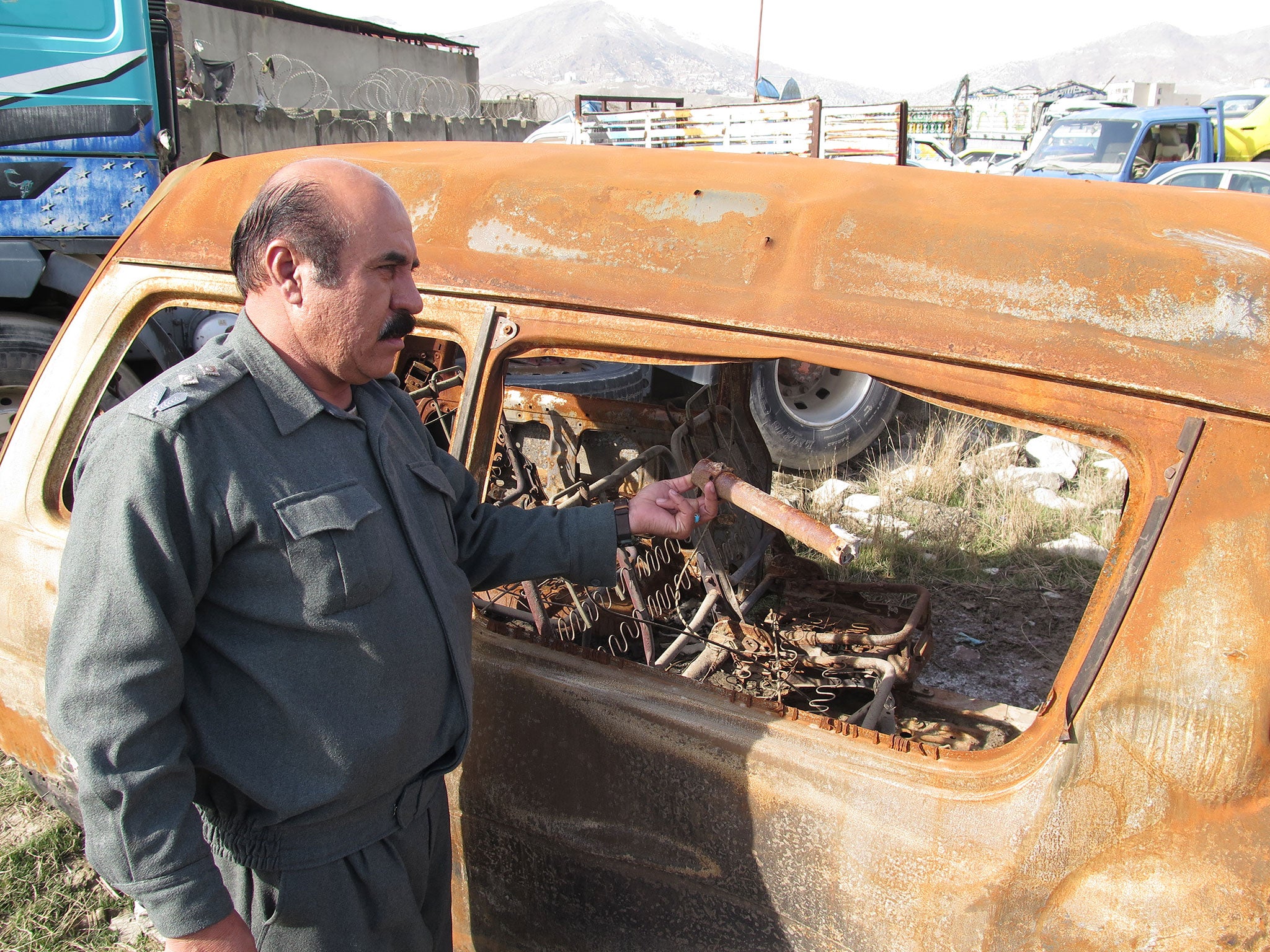Afghanistan 'terror museum' a macabre reminder of the carnage Taliban car bombs have wrought
The twisted wrecks at Shahrak police station in Kabul tell the story of attacks on the city and beyond

Your support helps us to tell the story
From reproductive rights to climate change to Big Tech, The Independent is on the ground when the story is developing. Whether it's investigating the financials of Elon Musk's pro-Trump PAC or producing our latest documentary, 'The A Word', which shines a light on the American women fighting for reproductive rights, we know how important it is to parse out the facts from the messaging.
At such a critical moment in US history, we need reporters on the ground. Your donation allows us to keep sending journalists to speak to both sides of the story.
The Independent is trusted by Americans across the entire political spectrum. And unlike many other quality news outlets, we choose not to lock Americans out of our reporting and analysis with paywalls. We believe quality journalism should be available to everyone, paid for by those who can afford it.
Your support makes all the difference.On the outskirts of the Afghan capital, down a lane of shin-deep mud, through mounds of rubbish picked over by children, is Shahrak police station, the final resting place for the wrecks that carried Kabul’s car bombs.
To understand the terror the Taliban has brought upon Afghanistan, and Kabul in particular, is to visit the charred husks of more than a dozen vehicles outside the police station. Like exhibits in a macabre museum, the ruined cars recall the violence that has consumed the city in recent years.
There is the skeleton of a Taliban truck bomb that targeted the Afghan parliament. Nearby is the scorched turban of a suicide bomber. Years of pain are piled up at Shahrak. “We are used to it by now,” says Miragha Gulbahari, a police officer, holding the turban up for reporters to see. “We have seen a lot of terrible things.”
Afghans are hoping the terror ends soon. This month, officials from Afghanistan, Pakistan, China and the US met for the second time to plan a tentative peace process. In a statement the four countries said they had “made progress on a road map toward initiating peace talks with Taliban groups”.
Unlike several cities overrun by the Islamists in 2015, Kabul has remained firmly under government control since the Taliban fled in 2001. Yet a glance around this vehicular graveyard shows that even the capital is now well within the Taliban’s deadly reach.
“This one happened about a week ago,” said a young police officer, pointing to a shredded white Toyota Corolla. The driver detonated his suicide vest near Kabul airport but managed to kill only himself. A few hours later, in almost exactly the same spot, a powerful Taliban truck bomb proved deadlier, killing one bystander, injuring dozens, shattering concrete blast walls and leaving a 15ft crater in the road.
The double blasts brought the week’s tally of car bombs to four, including another Taliban attack near the airport and a Taliban siege of an upmarket restaurant frequented by foreigners and Afghan officials. Authorities said the string of attacks was both seasonal and a “negotiating tactic” ahead of potential peace talks.
“Whenever the summer is gone we have a decrease in attacks in the provinces, and then the cities become the target,” said interior ministry spokesman Sediq Sediqqi. “And whenever you hear about peace talks, you also see an increase in attacks.”
Mr Sediqqi said having four car bomb attacks in one week was “worrying”.
“Imagine how they get ready for this, how they prepare themselves for this, how they assemble all these explosives in a truck and bring them,” he said. “There is a big possibility that they make these bombs in areas surrounding Kabul, but we do not know exactly where they come from or how they get here.”
Wherever they come from, many of the cars eventually end up here in Shahrak. So, too, do the vehicles that were on the streets near the explosions. “If the car bomb goes off inside the city, they bring the wreckage here so it doesn’t disturb people,” Mr Gulbahari said. “If it happens outside the city, they just throw it on the side of the road.”
© The Washington Post
Join our commenting forum
Join thought-provoking conversations, follow other Independent readers and see their replies
Comments